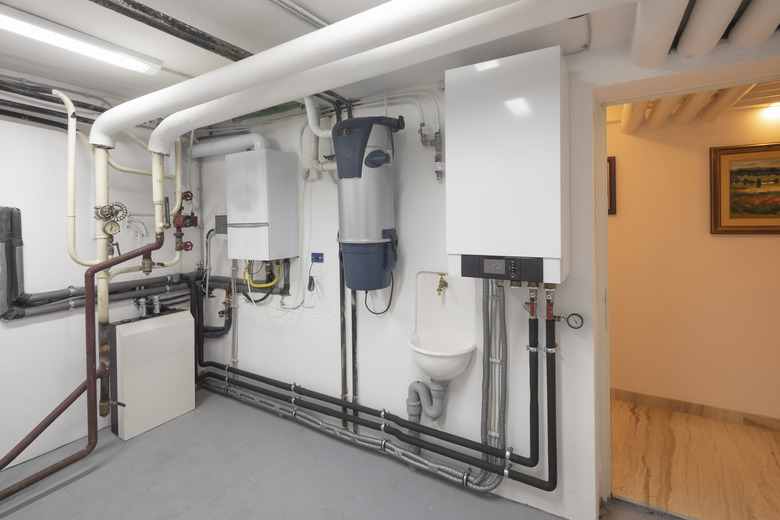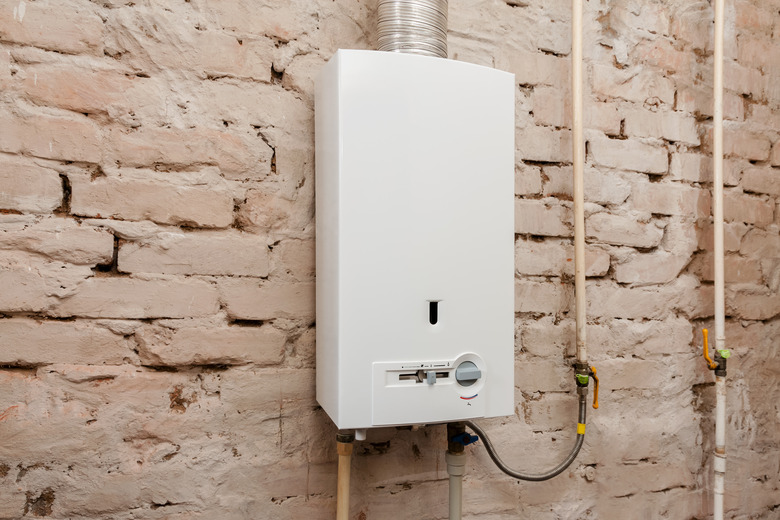A Homeowner's Guide To Choosing A New Boiler
We may receive a commission on purchases made from links.
If your old boiler has turned into a money pit because of frequent repairs and rising heating bills, it may be time for a new boiler. The new unit will certainly be more energy efficient than the old one, and it should reduce your energy costs as well as make your home more comfortable.
If you haven't upgraded your home heating system with a new boiler in some time, say 15 or so years, you may be surprised at the differences between the older and newer units. Newer technology — like electronic ignition systems and condensing boilers — may not have been available when your current boiler was installed, or at least not in widespread use.
When shopping for a new boiler, consider how it operates in terms of combustion and venting as well as its efficiency rating. If you are replacing a really old boiler, chances are that the unit is oversized — in the past, contractors routinely erred on the side of caution by installing boilers that had excess capacity. You and your contractor will want to match the capacity of the new boiler you choose with your home's heating needs.
New Boiler Operation
New Boiler Operation
Contrary to its name, a new boiler won't actually boil anything. The term "boiler" is left over from the time when all boilers were steam boilers, and the units needed to produce temperatures that created the steam.
In a water system, the water is heated to about 180 degrees Fahrenheit, which is warm enough to provide a comfortable level of heat, but the number can be adjusted if more heat is needed. However, most boilers have an upper limit that prevents the water in the system from boiling. Water expands when heated, and if it gets too hot, it can cause leaks at valves and other connections.
The operation of a new boiler is fairly straightforward. A fuel source, such as natural gas, propane, fuel oil or electricity, powers a burner that heats the water through a heat exchanger. A pump circulates the water through the radiators, baseboard heaters and radiant floor systems in the home. The water that has given up its heat energy returns to the boiler so that the process can begin again.
Boilers powered by natural gas, propane or oil require air for combustion. Your existing boiler probably relies on room air to aid combustion, like an open fireplace uses heated room air for combustion; it's called a nonsealed system. A new boiler will be either a sealed-combustion system or a nonsealed system. A sealed-combustion system draws in air from outside the home, so you don't use heated indoor air for combustion, which is more energy efficient.
Many existing boilers have a flue pipe that is hooked into the chimney of the house. A new boiler can provide venting options that include the existing chimney as well as direct venting. In a direct-vent system, a pipe can extend either horizontally through an outside wall or vertically through the roof of the house. This type of system is powered by a fan to expel harmful gases, and they usually include a separate pipe to draw in outside air for a sealed-combustion system.
New Boiler Efficiency
New Boiler Efficiency
The energy efficiency of a boiler is reflected in its annual fuel utilization efficiency (AFUE) rating. The rating is a ratio of the heat output to the amount of fuel the unit consumes over the course of a year. For example, electric boilers score around 100 percent because nothing is lost in combustion. Boilers powered by electricity are the most expensive to operate.
New Department of Energy requirements that go into effect in 2021 set the minimum AFUE for gas-fired water boilers at 82 percent and oil-fired water boilers at 86 percent. Steam boilers are a little lower. Those are low bars compared with the technology that is available. High-efficiency boilers available right now can have AFUE ratings above 95 percent.
Compare those numbers with an existing boiler. Older models that may not have been serviced regularly may only be about 50 percent efficient. A heating and cooling contractor can test the efficiency of an existing boiler. A low AFUE is a good reason for any homeowner to replace an old boiler.
Condensing and Noncondensing Boilers
Condensing and Noncondensing Boilers
There are a number of reasons new boilers are more efficient than old ones. Newer models have electronic ignition systems rather than standing pilot lights. Some have outdoor temperature reset systems where the water in the boiler can be raised or lowered in response to the temperature outside. The biggest energy saver is the use of condensing technology.
A condensing boiler differs from a noncondensing, or conventional boiler in how it handles the flue gases that are left over after combustion. A standard boiler lets the flue gases flow up the chimney to the outdoors.
A condensing boiler extracts the latent heat energy that is in those gases and uses it to help heat the water in the boiler. A second heat exchanger pulls the energy from the gases. In doing so, the flue gas temperature drops, and the water vapor in the gases condense to liquid water, hence the name. The condensate flows through a pipe to a drain.
Condensing boilers have been around for a number of years. In many parts of the world, such as the European Union, all new boilers are condensing boilers. Although they are by far the most efficient boilers with likely the lowest operating costs, condensing boilers can be expensive to install, as they require an installation of a drain and a PVC vent.
New Boiler Capacity
New Boiler Capacity
When you are having a new boiler installed, the goal is to match the system's output measured in British thermal units, or Btu, with the house's requirements. A system that is too large will waste money, and one that is too small won't keep you warm. And, it is not uncommon for an older boiler to be oversized for the house, making this task especially challenging since you might not want to get the exact same size as you currently have.
The rule of thumb for sizing a system is to first calculate the square footage of living space, including areas you converted to living space. Then, figure 50 Btu for each square foot if you live in a cold climate, 35 Btu for a moderate climate and 20 Btu for warm areas.
That will get you in the ballpark, but proper sizing of the system requires a look at the home's entire energy package. The contractor will consider such things as the home's insulation levels, air sealing, weatherstripping around windows and doors and the type of doors and windows in the house. Adding a programmable thermostat can also help reduce energy usage. A good contractor will do a whole-house heat loss calculation to determine the size of boiler needed.
What to Know About Combination Boilers
What to Know About Combination Boilers
Most boilers are used for space heating, but some can also heat water. In the past, the system consisted of a boiler and a separate storage tank for hot water. The two were connected, and heated water from the boiler was used to heat the water in the storage tank. This system suffers from the inefficiencies of any water heater where the water has to be kept at a constant temperature, say 125 degrees or so, even when there is no demand for hot water.
Newer combination boilers, or combi boilers, contain space heating and water heating ability in one unit. Rather than having a water storage tank, the units provide water on demand like a tankless water heater. A diverter directs incoming water through a heat exchanger when hot water is called for and then routes it to the fixture, but the units operate like any other boiler for space heating.
Combi boilers have two sizing requirements: one for space heating and the other for hot water delivery. For water, the units are rated on the number of gallons they provide per minute — with most homes requiring a flow rate of 5 to 9 gallons per minute. An experienced contractor can do the calculations to get the right-size system, which will be affected by the number of people in the house, the number of water fixtures in use at any one time and the temperature rise, which is the difference between the warm water coming out of the showerhead or other faucet and the temperature of the cold water coming into your home.

